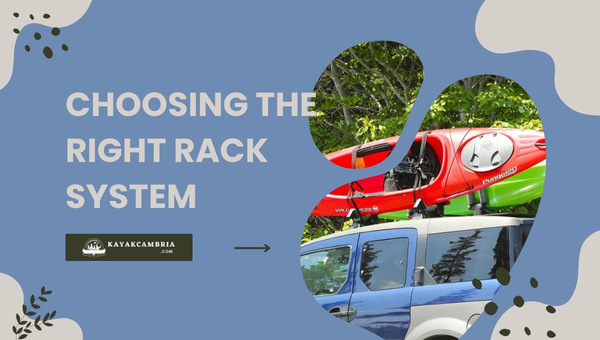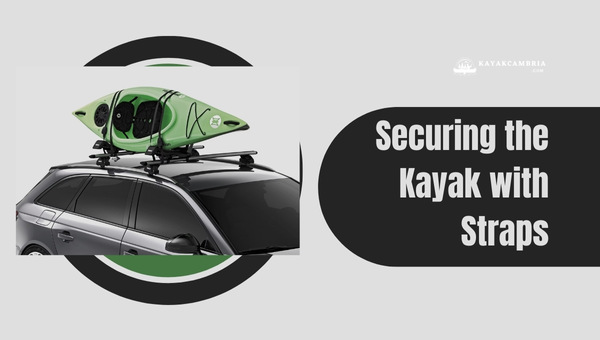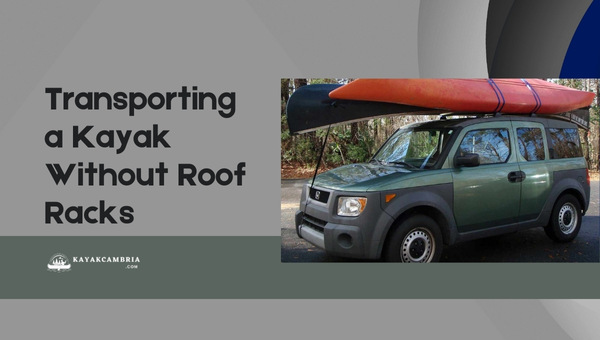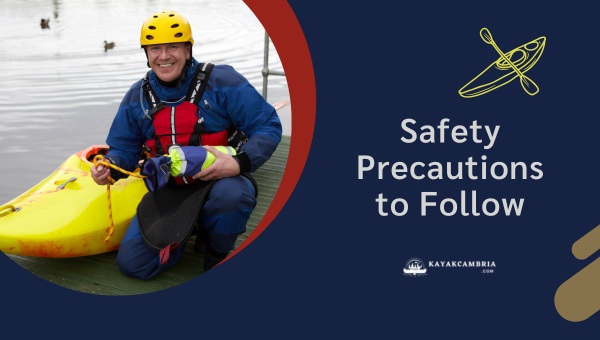Transporting a kayak on a car might seem like a daunting task, but with the right knowledge and equipment, it can be simple and safe. In this post, I’ll walk you through how to transport a kayak on a car without breaking a sweat, ensuring a smooth journey to your next kayaking adventure.
Before getting started, it’s essential to have all the necessary equipment to secure your kayak. Rooftop racks, foam pads, or cradles are popular options to safely and securely attach your kayak to the car while minimizing any damage. Additionally, you’ll need tie-down straps and a bow and stern line to ensure the kayak remains in place throughout your journey.
Once you have the necessary gear, it’s time to load up your kayak and hit the road! Always enlist the help of a friend to load your kayak on your car; not only will this prevent injuries but it will make the process more manageable. Properly securing your kayak is essential to avoid any unfortunate accidents. So remember, knowledge is power, and with these fundamental steps, you’ll be transporting your kayak like a pro in no time!
Contents
Contents
Choosing The Right Rack System

Transporting a kayak on a car may seem daunting at first, but with the right rack system, it can be a breeze. In this section, I’ll help you choose the perfect rack for your needs, making it easy to transport your kayak wherever your adventures take you.
Before you begin, it’s essential to know your car’s roof type to ensure that the rack you select will fit correctly. Cars typically have three basic roof types:
- Bare roof (no existing rails or crossbars)
- Raised side rails
- Flush side rails
Once you’ve identified your car’s roof type, you can consider the following rack systems:
- Temporary foam pad system: This is an affordable, basic option for transporting a kayak on a bare roof. Foam pads protect your car’s paint job and provide cushioning for your kayak. Use straps to secure the kayak in place. However, this isn’t the most secure or stable option, and it’s better suited for short distances or infrequent use.
- Soft rack system: A step up from foam pads, these consist of inflatable or cushioned bars that you mount onto your car’s bare roof by using straps. They offer more stability than foam pads but still aren’t ideal for long distances or high-speed travel.
- Roof rack system: This option is perfect for cars with raised side rails. You’ll install crossbars and then attach compatible kayak carriers or foam pads. There are many kinds of roof racks, so be sure to choose one that’s suitable for your car’s specific side rail type.
- Roof rack with attachable kayak saddles: If you own a car with flush side rails, you’ll need a complete roof rack system, along with attachable kayak saddles, to ensure your kayak is secure. Kayak saddles can be J-shaped, V-shaped, or cradle types, all designed to accommodate different types and sizes of kayaks.
Keep these factors in mind when choosing the right rack system for how to transport a kayak on a car:
- Frequency of use: How often you transport your kayak determines the kind of rack system you should invest in. Frequent kayakers should opt for a more robust, permanent rack system, whereas occasional hobbyists might be fine with a temporary solution.
- Budget: Choosing a rack system also depends on how much you’re willing to spend. Temporary foam pad systems are more budget-friendly, while roof racks and kayak saddles can be more expensive but offer better security and ease of use.
Remember to always adhere to the manufacturer’s instructions regarding weight limits and installation procedures when installing a rack system. Proper installation will ensure the safety of your kayak and vehicle during transport.
Securing The Kayak With Straps

One important aspect of how to transport a kayak on a car is making sure it’s securely strapped down. In this section, I’ll cover the best methods to secure your kayak using straps, ensuring its safety during transport.
First, you’ll need to gather the necessary materials:
- Roof racks or foam blocks for proper support
- Tie-down straps
- Bow and stern lines
Now that you’ve got your materials, let’s follow these steps:
- Position the kayak: Place your kayak on the roof racks or foam blocks, ensuring it’s properly supported throughout its entire length. You may need to add padding to any areas that may be at risk of damage from the straps.
- Attach tie-down straps: Loop the tie-down straps around the roof racks and over the kayak, making sure to go over the widest part of the boat. Avoid placing straps over any accessories or attachments, as this could cause damage.
It’s essential to use proper straps for the job, as they’ll offer the necessary strength and durability. Some suitable options include cam buckle straps or ratchet straps with padding to protect your kayak.
- Tighten the straps (CAREFULLY): When tightening the straps, avoid overtightening, as this can cause damage to your kayak. Aim for a snug fit, using gentle tension to ensure the boat remains stable in transit.
- Secure the bow and stern: Attaching bow and stern lines will add extra stability to your kayak during transport. Attach the lines to the front and rear of the boat and secure them to the towing eyes or other strong points on your car. Be sure not to overtighten these lines, as they could potentially damage the kayak or your car.
Here are a few more tips for optimal security:
- Always check your kayak periodically during your drive, making sure everything stays tight and secure.
- Use twist locks or carabiners to secure loose ends of the straps, preventing them from flapping during transport.
- If your roof racks have built-in attachment points for straps, use them to keep the kayak as secure as possible.
Transporting a Kayak Without Roof Racks

Transporting a kayak on a car can be challenging, especially if the car does not have roof racks. However, it’s essential to find a solution that prevents damage to both the car and the kayak. In this section, I’ll discuss various options for transporting a kayak without roof racks.
One option for how to transport a kayak on a car without roof racks involves using foam blocks or inflatable cushions. These provide a soft and stable surface for the kayak to rest on. I suggest the following steps when using foam blocks:
- Place the foam blocks or inflatable cushions on the car roof at equal distances from each other.
- Gently place the kayak on top of the foam blocks, ensuring it’s centered and secure.
- Use cam straps or ratchet straps to tightly secure the kayak to the car. Run the straps through the kayak’s grab handles and through the car’s door openings to create a firm grip.
- Regularly check the straps during the journey to ensure they stay tight and secure.
Using a temporary soft rack system is another way to transport a kayak without roof racks. Temporary soft racks are padded bars that attach to the car’s roof through the door frames. They provide a stable and secure surface for the kayak. Here’s how to use a soft rack system:
- Attach the soft rack bars to your car roof according to the manufacturer’s instructions.
- Place the kayak on the bars, ensuring it’s well-centered.
- Secure the kayak using cam straps or ratchet straps.
- Regularly check the straps during your trip to maintain a secure hold.
Alternatively, consider using a hitch-mounted kayak carrier. These carriers attach to the rear hitch of your car, allowing you to transport the kayak horizontally or vertically. Hitch-mounted carriers may require additional assembly and accessories, so I recommend researching before purchasing one.
Safety Precautions to Follow

As an experienced kayaker, I’ve encountered countless situations that could have been easily avoided by following a few crucial safety precautions. In this section, I’ll outline some key safety tips for transporting a kayak on a car.
First, it’s essential to properly secure your kayak. To avoid any incidents, you should:
- Use a roof rack specifically designed for kayaks or an alternative such as a foam block system.
- Utilize proper straps, such as ratchet straps or cam straps, to ensure a tight and secure fit.
- Make sure to strap both the front and back of the kayak to the car, as well as the sides to the rack.
- Regularly check and tighten the straps during transport, as they can loosen over time and due to vibrations.
Next, keep in mind the overall length of your kayak and any potential hazards it may cause. Here are a few essential points to consider:
- Be aware of your kayak’s protruding length, particularly in front and behind your vehicle.
- Always use high-visibility flagging or other indicators to make your kayak more noticeable to other drivers.
- Be cautious when making turns or backing up, remembering that your kayak’s length will affect these movements.
- Pay extra attention to low clearances like parking structures, trees, and bridges; your kayak could be damaged if not accounted for.
Another factor you shouldn’t overlook is wind resistance. Always be prepared by:
- Avoiding excess speeds as higher wind resistance can put extra strain on the straps and your vehicle.
- Being mindful of crosswinds and their impact on the stability of your kayak.
Finally, before setting off on your trip, double-check your kayak and equipment. Make sure you:
- Inspect the straps, rack, and kayak for any signs of wear or damage that may cause issues during transport.
- Secure all hatches, rudders, and other loose items on your kayak, remembering that these can come undone during transport.
By following these fundamental safety precautions, you’ll be well on your way to safely and confidently transporting your kayak on a car.
Paddles and Gear: Managing The Extras

When figuring out how to transport a kayak on a car, it’s essential to consider not only the kayak itself but also the paddles and gear. You’ll want to ensure that everything is secure, easily accessible, and doesn’t pose a hazard on the road. Here are a few tips for managing the extras when transporting your kayak.
First off, let’s talk paddles. Generally, you have two main storage options:
- Inside the car: If you’ve got enough space inside, you can place the paddles alongside the seats or in the trunk. Just be sure they don’t obstruct your field of view or hinder seat adjustments.
- On the roof: Some carriers offer attachments that hold paddles alongside the kayak. This keeps everything together, making it more convenient, especially if you plan on making frequent stops.
Moving on to gear, it’s crucial to stow it securely in case of sudden braking or sharp turns. Here are a few pointers:
- Use a dry bag to keep your gear organized and protected from water damage. If possible, invest in one that has various compartments.
- Maintain a low center of gravity by placing heavier items at the bottom and lighter ones at the top.
- Avoid overloading your car. Keep its Maximum Authorized Mass (MAM) ratings in mind.
- Always make sure you can freely access essential items, like first-aid kits, maps, and emergency repair tools.
As for additional equipment, you might need to carry items like life jackets, spray skirts, and helmets. Optimize storage by:
- Placing smaller items inside hatches or storage compartments inside the kayak if available. Be mindful not to add excess weight.
- Using cargo nets or bungee cords for on-deck storage. Keep in mind that these could catch the wind, so keep them close to the kayak and as low-profile as possible.
- Carrying larger items like life jackets inside the car. This prevents them from catching wind and reduces the risk of losing them during transit.
Checking Local Laws and Regulations

It’s essential to know if there are any local laws or regulations to follow. These guidelines can vary depending on where I live or the path I’m taking to my kayaking destination.
First, I need to research whether my state or municipality has specific laws for transporting kayaks. Some locations might require certain permits or have particular rules about the placement on the vehicle. It’s crucial to know these laws, as I don’t want to risk any fines or penalties when trying to enjoy my day on the water.
It’s also important to consider any temporary restrictions or road conditions that might affect my ability to transport a kayak legally. For example, if there’s a road closure or construction that prohibits large or oversized loads, I may need to find an alternate route.
Here are a few more steps I can take to ensure compliance with local laws and regulations:
- Checking my vehicle’s owner manual: It’s essential to know whether my car is equipped to transport a kayak safely and securely. The manual should provide details on weight limits and roof rack installation, among other information.
- Contacting local authorities: If I’m unsure about any regulations in my area, it’s a good idea to reach out to local law enforcement or other authorities. They can provide me with specific rules to follow and potentially recommend the best way to transport my kayak.
- Researching online: There are many online resources and forums dedicated to kayaking enthusiasts. I can easily find information on best practices, recommendations, and experiences from fellow kayakers in my area.
Some specific regulations to consider when transporting a kayak on a car include:
- Flagging the kayak: In some states, it might be required to have a red flag attached to the end of the kayak if it extends beyond a certain length past the vehicle’s rear.
- License plate visibility: It’s crucial to ensure that my vehicle’s license plate is not obstructed by the kayak or any additional equipment.
- Securing the kayak properly: I must secure my kayak to the car with appropriate straps and tie-downs, ensuring that it’s stable throughout the journey.
Tips for Driving With a Kayak

Transporting a kayak on a car can seem daunting, but I’m here to help with practical tips for driving safely and efficiently with a kayak in tow. It’s essential to ensure that both your kayak and your car arrive at the destination in top condition.
Before hitting the road, properly secure the kayak to your car’s roof rack. It’s crucial to double-check the straps and ropes, ensuring they’re snug but not too tight, as this can cause damage to your kayak. Don’t forget to use bow and stern lines for added stability.
To reduce wind resistance, position the kayak on its side or upside down on the roof rack. This will not only improve fuel efficiency but also lessen the chances of the kayak wobbling during the drive.
Keep an eye on weather conditions before you set off. Heavy rain or strong winds can make transporting a kayak more difficult and increase the chance of an accident. Consider postponing your trip if the weather is unfavorable.
When driving with a kayak, think about the following safety precautions:
- Adjust your speed: Maintain a lower-than-usual speed, especially on winding roads or during heavy traffic. Sudden braking or sharp turns can destabilize the kayak.
- Take care of bridges: Pay attention to bridge height clearance signs. Low bridges or overpasses can be problematic if your kayak is mounted high on the car.
- Be aware of your vehicle’s height: Parking garages and drive-throughs may pose a risk when transporting a kayak on top of your car. Make sure you know your vehicle’s total height before going through any low-clearance areas.
Lastly, prepare for the unexpected. Equip your car with a safety kit that includes items like ratchet straps, cam buckle straps, or rope for emergency repair and extra fastening. It’s better to be safe than sorry.
Wrapping It Up: Final Thoughts
Properly transporting a kayak on a car is essential for both the safety of the kayak and other motorists on the road. I’ve discussed the various methods and equipment that can be used to achieve this safely. The key takeaways from this article are:
- Assess your car’s roof type and select an appropriate kayak carrier system
- Double-check accessories and equipment, such as rack systems, straps, and bow/stern tie-downs
- Load and secure the kayak following the guidelines provided by the carrier system
- Exercise caution while driving to ensure the safety of the kayak and motorists around you
By following these guidelines, transporting your kayak on a car becomes a stress-free experience that allows you to focus on enjoying your time out on the water. So go ahead and get your kayak ready for the next adventure, and rest assured that it’ll arrive at its destination safely and securely.

